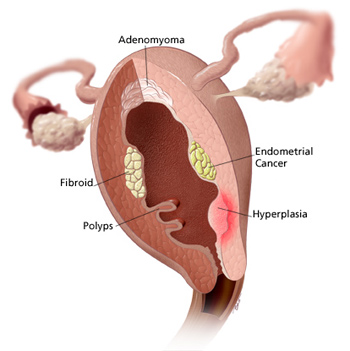Uterine Fibroids Treatment

What Are Uterine Fibroids?
Uterine fibroids are non-cancerous growths that develop in or outside a womens uterus. Fibroids are very common in women and are usually too small to cause any problems or be noticed. They can also appear during childbearing years.
Uterine Fibroids Symptoms
The most common symptoms of uterine fibroids include: heavy bleeding, pelvic pain, abnormal periods, difficulty emptying your bladder, frequent urination, and constipation.
Hysterectomy Surgery
Surgery can be used to remove fibroids only or remove the entire uterus. hysterectomy- is the removal of the entire uterus and is a proven way to get rid of fibroids, but it may not be the best option for every patient.
Hysterectomy’s are only recommended for women who have no future pregnancies planned. Medication prescribed by your doctor may be the best option to stop fibroid growth or to shrink them in cases where women plan on having future pregnancies.
Alternative to Hysterectomy
Another great alternative to a hysterectomy, is a myomectomy. Myomectomy is the surgical removable of fibroids from the uterus and makes pregnancy more likely then before.
PN 1002243 Rev B 01/2014
Serious complications may occur in any surgery, including da Vinci® Surgery, up to and including death. Examples of serious or life-threatening complications, which may require prolonged and/or unexpected hospitalization and/or reoperation, include but are not limited to, one or more of the following: injury to tissues/organs, bleeding, infection and internal scarring that can cause long-lasting dysfunction/pain. Risks of surgery also include the potential for equipment failure and/or human error. Individual surgical results may vary.
Risks specific to minimally invasive surgery, including da Vinci Surgery, include but are not limited to, one or more of the following: temporary pain/nerve injury associated with positioning; temporary pain/discomfort from the use of air or gas in the procedure; a longer operation and time under anesthesia and conversion to another surgical technique. If your doctor needs to convert the surgery to another surgical technique, this could result in a longer operative time, additional time under anesthesia, additional or larger incisions and/or increased complications.
Patients who are not candidates for non-robotic minimally invasive surgery are also not candidates for da VinciSurgery. Patients should talk to their doctor to decide if da Vinci Surgery is right for them. Patients and doctors should review all available information on non-surgical and surgical options in order to make an informed decision. For Important Safety Information, including surgical risks, indications, and considerations and contraindications for use, please also refer to www.davincisurgery.com/safety and www.intuitivesurgical.com/safety. Unless otherwise noted, all people depicted are models.


